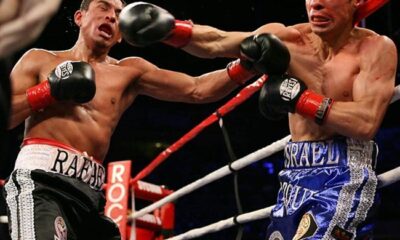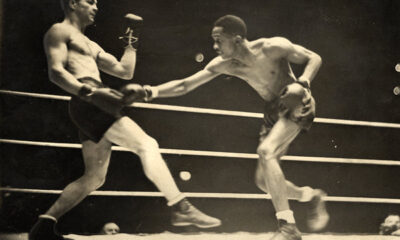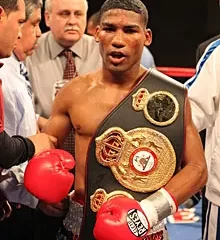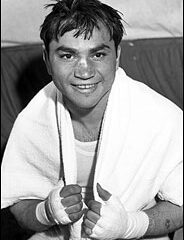Featured Articles
This Day in Boxing History: Quiet Days, Pivotal Moments
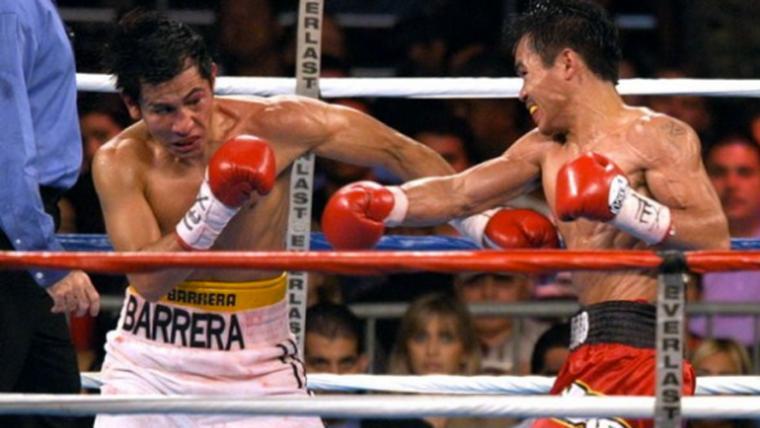
November 15 is a day in boxing history that hums quietly beneath the surface, producing moments that reshape careers, signaling the rise of new regions, and marking the arrival of a future icon. A closer look at November 15th over the years reveals a string of quietly significant turning points that illuminate the sport’s evolution across decades and continents.
1952 – Jimmy Carruthers vs Vic Toweel
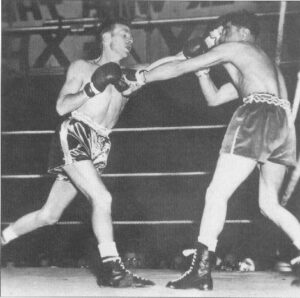
On November 15, 1952, the spotlight fell on Jimmy Carruthers, an Australian southpaw whose journey to the bantamweight championship would become a touchstone for the nation. Traveling to Johannesburg, Carruthers faced Vic Toweel, the reigning world bantamweight champion. Few predicted that the fight would last barely two rounds. From the opening bell, Carruthers unleashed a torrent of punches that left Toweel overwhelmed and dazed, culminating in a first-round knockout. It was a seismic moment for Australian boxing — Carruthers became the first universally recognized world champion from the country, forever changing the narrative of boxing beyond traditional power centers. In that swift, decisive victory, the sport’s geography subtly shifted: champions could emerge from anywhere, and the global map of boxing was expanding.
1952 – Yoshio Shirai vs Dado Marino
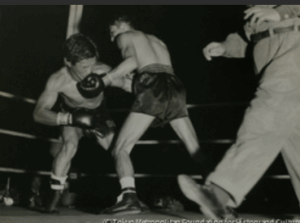
Thousands of miles away in Tokyo, Yoshio Shirai was asserting a different kind of dominance. Japan’s first world champion successfully defended his flyweight crown against Dado Marino. It was a grueling fifteen-round rematch, demonstrating not just skill but endurance and tactical brilliance. Shirai’s reign resonated beyond the ring; post-World War II Japan was rebuilding, and his triumphs offered a symbol of national pride and international legitimacy. His performances reflected the sport’s growing global reach and hinted at a future where boxing was no longer confined to the United States, the United Kingdom, or Latin America. Champions like Shirai were forging pathways for Asian fighters and audiences, contributing to the truly international character boxing would come to embrace.
2003 – Manny Pacquiao vs Marco Antonio Barrera
Fast-forward half a century to November 15, 2003, in San Antonio, Texas. Manny Pacquiao, already a rising star in the Philippines, faced one of the fiercest tests of his young career: Marco Antonio Barrera, a seasoned Mexican champion with a reputation for technical precision and formidable resilience. The fight unfolded as a showcase of contrast and transition. Barrera, methodical and measured, attempted to impose his experience. Pacquiao, however, was mercurial, his speed and angles breaking through defensive walls with relentless pressure. By the 11th round, the fight’s trajectory was unmistakable: Barrera’s corner threw in the towel. Pacquiao had not only captured the Ring Magazine Featherweight Championship, but he had also announced himself on a global stage. The victory signaled the emergence of a fighter who would become one of boxing’s most transcendent stars — a pugilist whose influence would extend across weight classes, nations, and digital platforms.
November 15th in History
It is a date that illustrates boxing’s evolution not through singular, blockbuster nights, but through quiet, pivotal achievements. Carruthers’ lightning-quick knockout announced Australia’s arrival on the world stage. Shirai’s championship defense in Tokyo demonstrated the sport’s international maturation and the symbolic power of boxing in postwar cultural recovery. Pacquiao’s triumph over Barrera introduced a modern superstar whose career would redefine global boxing in the early twenty-first century. The significance of this date lies in the cumulative impact of these moments — a quiet chronicle of breakthroughs, ambition, and enduring influence.
Fun Facts:
Carruthers vs Toweel
Jimmy Carruthers entered boxing history with an unusual handicap: he suffered from chronic asthma and often relied on an inhaler before training sessions, making his rise to world champion all the more remarkable. Known for his speed and precision, he retired with a strong record (21-4, 13 KOs).
Vic Toweel, South Africa’s first world boxing champion, holds one of boxing’s wildest records—scoring an incredible fourteen knockdowns in a single title fight against Danny O’Sullivan two years earlier. Coming from a family of fighters (four brothers who all fought professionally), Toweel was admired for his toughness, though brutal weight cuts increasingly hindered him late in his career, adding an extra layer of drama to his clash with Carruthers.
Shirai vs Marino
Yoshio Shirai’s reign as flyweight champion helped ignite a nationwide boxing boom in postwar Japan, and he became a popular radio and television personality after his fighting career ended. He was known for his precision, discipline, and rare defensive sophistication, all of which drew massive radio audiences in a country rebuilding its identity. At one point, he was one of the highest paid athletes in Japan, an impressive rise for someone who grew up in postwar poverty.
Dado Marino, a Hawaiian-born fighter of Filipino descent, was one of the earliest Asian-American world champions. He was revered for his iron chin—before meeting Shirai, he had never been stopped. Marino also served in World War II, making his postwar title run both a personal comeback and a symbol of resilience.
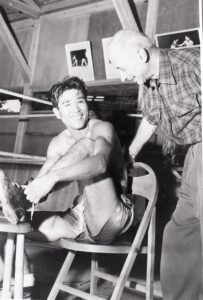
Alvin Rober Cahn (sometimes rendered as Alvin Robert or Al Rober) was an American trainer who not only shaped Yoshio Shirai, but also played an unexpectedly pivotal role in influencing modern Japanese boxing. Arriving in the post–World War II occupation era, he introduced U.S.-style “scientific boxing” to gyms that had yet to adopt modern methods. He brought with him equipment like the speed bag and slip ball, and he emphasized defense with slip and roll drills, feints and counter-punching, and angled footwork. His bond with Yoshio Shirai was transformative—Rober rebuilt Shirai’s defensive style from the ground up, molding him into Japan’s first world champion and helping legitimize Japanese boxing on a global stage. Many trainers who followed borrowed from Rober’s routines, solidifying his influence on Japanese fighters.
Pacquiao vs Barrera
When Manny Pacquiao was training for his fight against Marco Antonio Barrera, he was living in a modest apartment above a Los Angeles grocery store and training with Freddie Roach, Pacquiao surprised observers with the speed and unpredictability that would define his legendary career. Pacquiao is the only boxer in history to become a world champion in four different decades.
Barrera trained for the fight in the same manner and gym where he had prepared for the Morales fights, with his camp assuming that Pacquiao’s style would be “simpler”. After the loss, Barrera later admitted that Pacquiao was the fastest puncher he ever faced. Barrera was juggling boxing with law studies, and his studious demeanor outside the ring contrasted sharply with his ferocity inside it. He earned his law degree after retirement.
-

 Featured Articles3 weeks ago
Featured Articles3 weeks agoResults from Australia where Cruiser Champ Jai Opetaia Starched Another Overmatched Foe
-
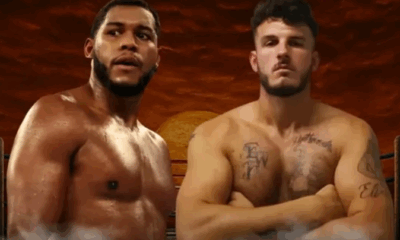
 Featured Articles3 weeks ago
Featured Articles3 weeks agoMichael Hunter vs Eli Frankham: A Strange Match-Up at a Storied Venue
-
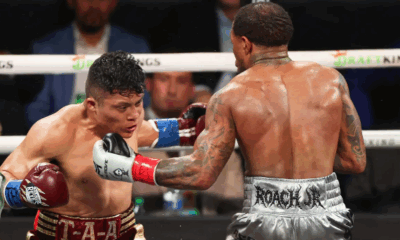
 Featured Articles3 weeks ago
Featured Articles3 weeks agoResults from San Antonio where Cruz vs Roach Ended in a Stalemate
-
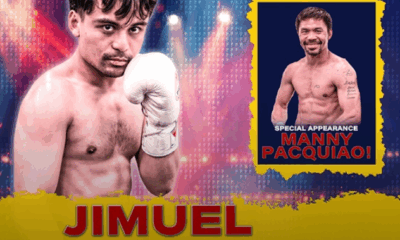
 Featured Articles4 weeks ago
Featured Articles4 weeks agoAvila Perspective, Chap. 353: ‘Pacman’ at Pechanga and More
-
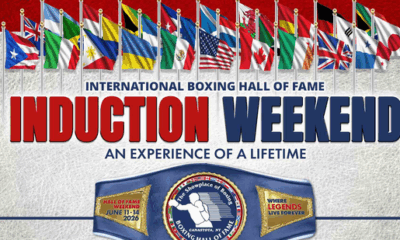
 Featured Articles3 weeks ago
Featured Articles3 weeks agoGennadiy Golovkin, Nigel Benn, and Antonio Tarver named to the Boxing Hall of Fame
-

 Featured Articles4 weeks ago
Featured Articles4 weeks agoLazaro Lorenzana Defeats Luis Arias on Manny Pacquiao’s First U.S. Promotion
-

 Featured Articles2 weeks ago
Featured Articles2 weeks agoDiego Pacheco, Joe Cordina, Tito Mercado, and Skye Nicolson Triumph in Stockton
-

 Featured Articles2 weeks ago
Featured Articles2 weeks agoMurat Gassiev KOs Kubrat Pulev in Dubai

